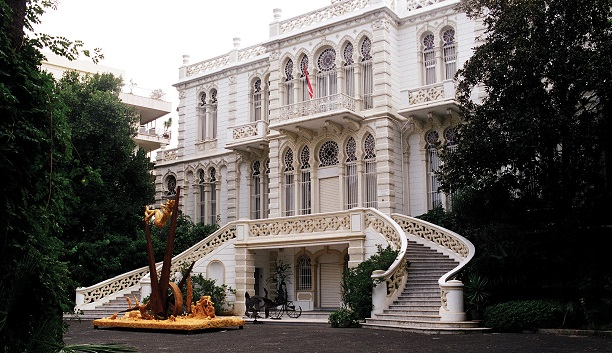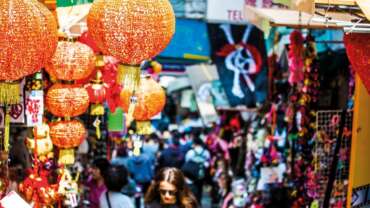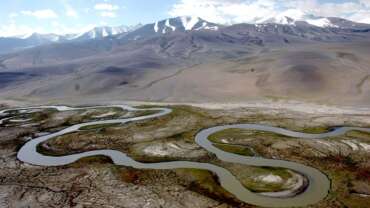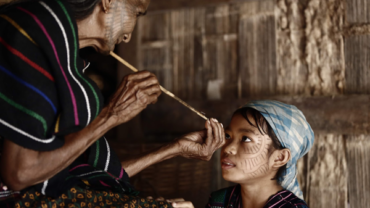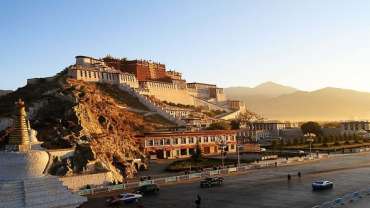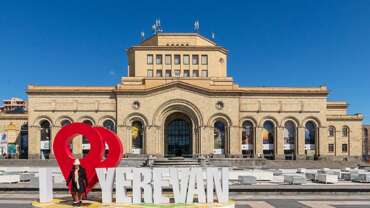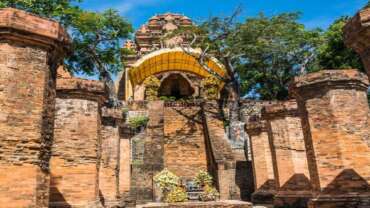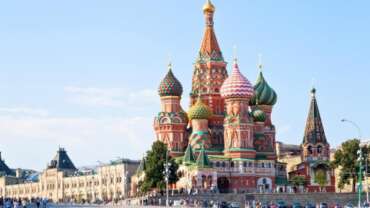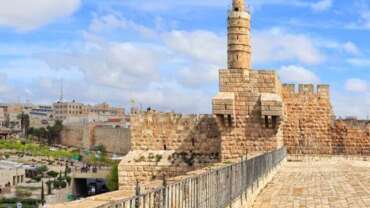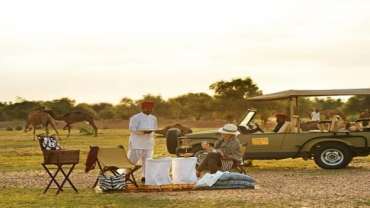Live Love Lebanon
Lebanon is famous for its exquisite beauty, diversity, glamor, European flavor, and hospitable people. Its rich culture and history have placed it on the “must see” list of every world traveler. Lebanese cities are among the most famous names in ancient history and majestic ruins still stand today as a testimony to the greatness of people who lived in this land.
The nature of Lebanon makes it the only country in the Arab world that embraces four seasons yearly. No matter what the season, there is always something special to enjoy. In the winter season, ski resorts offer tourists slopes that are comparable to even the best resorts in Europe. In the summer, international festivals all over the country – in Baalbek, Byblos, Beiteddine, Batroun, and Jounieh – bring together Lebanese and foreign artists to perform in stunning archaeological and historical sites. These events have given Lebanon an enviable place on the cultural map of the Middle East.
Lebanon has it all! Visitors to Lebanon enjoy outstanding service in world-class hotels and resorts, restaurants, casinos, theaters, cinemas, and nightclubs and luxury shopping centers along with advanced communication and transportation services. Lebanon also offers access to cutting-edge medical centers.
Landscapes that change with the seasons, but are always bathed in the warm sun. The daylight rising over Lebanon brings endless opportunities of fun, beach, nature and outdoor activities. You’ll never know what to choose. Whatever it will be, an unforgettable time awaits you under the shiny Lebanese sun.
History of Lebanon
A trip through Lebanon is a journey through the annals of some of the world’s greatest civilizations. With over 5,000 years of recorded history, the country is a treasure trove of archaeological wonders, waiting to be discovered by visitors who want a glimpse into the ancient and modern past. Most of Lebanon’s historical sites have layers upon layers of ruins, with each layer uncovering the story of another civilization that inhabited this ancient land.
– Prehistoric Times
– Phoenicians
– Greeks
– Romans
– Byzantines
– Arabs
– Crusaders
– Mamlukes & Ottomans
Prehistoric Times (5,000-3,500 B.C.)
A trip through Lebanon’s history begins in Jbail (Byblos), where archaeologists have discovered the earliest known settlements in Lebanon. Today, remnants of prehistoric huts with crushed limestone floors, primitive weapons, and burial jars are evidence of the Neolithic and Chalcolithic fishing communities who lived on the shore of the Mediterranean Sea over 7,000 years ago.
Phoenicians (3,500-334 B.C.)
Lebanon first appeared in recorded history around 3,000 BC, with the settlement of the area by the Canaanites. The Canaanites established great maritime, trade, and religious city-states in several of Lebanon’s coastal cities: Jbail (Byblos), Sour (Tyre), Saida (Sidon), and Beirut. The Greeks referred to these Semitic people as “Phoenicians,” after the Greek word for the expensive purple-dyed textiles that the Phoenicians exported.
Jbail (Byblos) was a significant Phoenician religious center and also an important trading center with close links to the Egyptian Pharaohs. The city is also recognized as the birthplace of the modern Roman alphabet, which evolved from Phoenician phonetic script. Phoenician ruins include the remnants of fortified city walls and gates, several temples, and the underground tombs of the Byblos kings.
Saida (Sidon) became a dominant commercial center for the region during the 12th-10th centuries B.C. Close to Saida (Sidon), visitors can view the ruins of the Phoenician Temple of Echmoun, a complex honoring the principal god of the city of Saida (Sidon). This is the best-preserved Phoenician site in Lebanon today.
The Phoenician island city of Sour (Tyre) surpassed Saida to become the dominant trading center under its most famous ruler, King Hiram I (10th century B.C.). Allied with King Solomon, King Hiram I led the Phoenician expansion into Sicily and North Africa. During this time, the Mediterranean Sea became known as the “Tyrian Sea.” King Hiram is also remembered for supporting the construction of Solomon’s Temple in Jerusalem by supplying labor, gold, and cedar wood. While there are few evident Phoenician ruins in Sour (Tyre) today, visitors can see the jetties and breakwaters from the ancient island cities just off the coast of the city. The Tomb of King Hiram is also located just a few kilometers from Sour (Tyre).
Baalbek was an inland city, at the crossroads of the major north-south and east-west trading routes, settled by the Phoenicians as early as 2,000 B.C. The Phoenicians built the first temple here, dedicated to the god Baal, the Sun God, from which the city got its name. Today, Baalbek’s Phoenician origins have been covered and eclipsed by the great Roman temples later built on the site.
Greeks (333-64 B.C.)
In 333 B.C., Alexander the Great conquered the Phoenician city-states, and ancient Phoenicia was absorbed into the Greek Empire (which covered Europe, North Africa, and the Middle East). Greek customs and the Greek language were adopted. Alexander the Great died in 323 B.C. (only 10 years after his conquest of the Middle East), and over 250 years of unrest and dynastic struggles followed. Greek rule in the region was finally overturned by the Roman General Pompey in 64 B.C.
While there are no significant ruins from the Hellenistic period in Lebanon, one notable Greek site for history-lovers is in Sour (Tyre). While most of the Phoenician cities submitted immediately to Alexander the Great’s conquest in 333 B.C., Sour (Tyre) resisted in a year-long siege that destroyed much of the city. Alexander used the debris from the abandoned mainland city to build a causeway to reach the fortified island city and eventually conquer the Tyrians. Today, this causeway has been enlarged with sand to form a peninsula that connects the ancient island city to the mainland. As you walk between the major archaeological sites in Sour (Tyre), you will cross this “Quarter of Sand” (Hay El-Ramel) that was once Alexander’s causeway.
Romans (64 B.C. – 399 A.D.)
Roman rule in Lebanon lasted over 300 years. During this period, the old Phoenician cities continued to grow and prosper as centers of industry and commerce. The coastal cities (Saida, Sour, Beirut) exported cedar, perfume, jewelry, wine, and fruit to Rome and served as trading centers for goods imported from Syria, Persia, and India. Local industries, including the production of silk, glass, purple-dyed textiles, and pottery, flourished under the Romans. Temples and palaces were built throughout the country, as well as paved roads that linked the cities. Christianity also spread to Lebanon during this era, and flourished as the Roman emperors officially adopted the religion.
For a modern-day visitor, it is difficult to travel more than a few kilometers in Lebanon without running into a Roman-era ruin. The country is home to some of the best-preserved and most impressive Roman sites in the world, most notably at Baalbek and Sour (Tyre).
Baalbek’s impressive complex of temples and city ruins includes the Temple of Bacchus (the best-preserved temple in the Middle East) and the columns of the Temple of Jupiter (the largest Roman temple ever constructed). Under the Romans, Baalbek, or the “City of the Sun,” was a major religious center that served as a testament to the power and wealth of the Roman Empire.
The city of Sour (Tyre) became the capital of the Roman province of Syria-Phoenicia. Roman-era highlights include the world’s largest Roman hippodrome (where chariot races were held), an enormous triumphal arch, an extensive necropolis, and the remains of Roman aqueducts.
In Jbail (Byblos), artifacts include the remains of a Roman theater, columns lining the main thoroughfare of the ancient city, and a Roman nympheum (a monumental public fountain).
In the Central Business District of Beirut, visitors can view the remains of a large Roman bath complex and a market area, as well as the columns and foundations of large buildings.
Byzantines (399-636 A.D.)
The Byzantine era in Lebanon began with the split of the Roman Empire in 395 A.D. into the eastern/Byzantine part (with its capital at Constantinople) and the western part (with its capital at Rome). As the Western Roman Empire declined, the Byzantine Empire grew and commercial and intellectual growth in Lebanon’s cities continued.
However, around the 5th and 6th centuries A.D., ecumenical debates and corruption in the church led to increasing unrest. From this religious dissension, the Maronite Church was established and took refuge in the mountainous Qadisha Valley region of Lebanon, and the Valley has remained a place of spiritual refuge and pilgrimage to this day. There are many archaeological remains of Lebanon’s Byzantine era around the country, many built on top of and added to previous civilizations’ cities and sites.
In Baalbek, Byzantine Emperor Theodosius tore down the altars of the Temple of Jupiter and built a basilica using the temple’s stones and architectural elements. The remnants of this basilica can still be seen near the stairway of the Temple.
In Sour (Tyre), the city entered a golden era during this time period. Today, Byzantine stone mosaics line the ancient colonnaded street at the Al-Mina archaeological site (“City Site”). The Al-Bass Site contains the remains of a Byzantine church, as well as a necropolis containing hundreds of ornate stone and marble sarcophagi from the Roman and Byzantine periods.
Arabs (660-1258 A.D.)
Many clashes took place at this period between the Byzantine Empire and its opponents mainly the Muslims whose widespread reached the borders of the empire.
The Umayyad Dynasty, which flourished for 100 years (660-750 A.D.) in the first century after Muhammed, was the first of two dynasties of the Arab Islamic empire. The Umayyad caliphs were notable for establishing a large empire, which extended from Spain, through North Africa, to Central Asia. They established Arabic as the official language of the empire, and they are remembered for their excellent city administration and planning and their patronage of early Islamic art and architecture. Following a coup, the Umayyads were replaced by the Abbasid Dynasty (750-1258 A.D.), who shifted power eastward to Baghdad and imposed harsh control in Lebanon and Syria, leading to many local revolts.
Under Arab rule, the region of Lebanon became a refuge for many ethnic and religious groups. Splinter Christian groups, including the Maronites and the Melchites, settled in the Qadisha Valley and Zahlé. Islamic followers of an Egyptian caliph settled in southern Lebanon and established the Druze sect, still a major religious group in the Chouf and other areas of modern-day Lebanon. Shiite Muslims from Egypt also had increasing influence in the region during this era.
Lebanon’s cities continued to prosper as trading and industrial centers under Arab rule. However, there are few archaeological remnants of this period in Lebanon today.
The impressive city of Aanjar is the only known remain of the 8th century Umayyad Dynasty in Lebanon. Thought to be the summer home of Caliph Walid I, Aanjar was a major commercial center for the region and contains the remains of over 600 small shops, colonnaded boulevards, baths, and temples.
Crusaders (1099-1291 A.D.)
As Arab leadership fragmented, and following Caliph Al-Hakim’s occupation of Christian holy places in Palestine and destruction of the Holy Sepulcher, the Christians of western Europe undertook a series of “Crusades” to recover the Holy Land from the Muslims. The European Crusaders joined with the Byzantine army to take Jerusalem and then marched along the Lebanese coast. Between 1109 and 1124, Lebanon’s key cities (Tripoli, Beirut, Saida, Sour) were all conquered by the Crusaders. Soon after, the Muslim reconquest began, led by Saladin, with the region returning to Muslim control by 1291.
One lasting influence of the Crusades in Lebanon was the creation of renewed linkages between the Maronites and the Roman Catholics. In 1180, the Maronite Church entered a formal union with the Roman Catholic Church, a union that still exists today. There are also numerous archaeological remnants (towers, castles, and churches) of the Crusades scattered along the Lebanese coast and throughout the countryside. Notable sites include:
The Saida Sea Castle, which sits on a small island in the harbor, connected by a stone bridge to mainland Saida (Sidon).
The Citadel of Saint-Gilles, a large fortress on a hill in the center of Tripoli.
The ruins of the stone walls and moats of a Crusader castle can be seen in the town of Enfé, south of Tripoli.
The ruins of the Holy Cross Cathedral, an important Crusader church in Sour (Tyre).
Mamlukes (1250-1516 A.D.) & Ottomans (1516-1914 A.D.)
Following the Crusades, modern-day Lebanon, Syria, and Egypt came under the control of the Mamlukes. The Mamlukes were originally slave bodyguards (from the Caspian and Caucasus regions) for the Egyptian Ayoubid sultans. However, the Mamlukes overthrew their masters and formed the Mamluke Sultanate. Many Shiite Muslims migrated to Lebanon during this period, and there were increasing religious tensions. After a number of rebellions near Beirut were crushed, the Shiites moved to settle in Southern Lebanon.
The Mamlukes were defeated by the Turkish Ottomans in 1516, and the Ottomans dominated the region for the four centuries preceding World War I.
A tour in the Lebanese History:
At origins: Archeologists in Lebanon have discovered remnants around a million years old, and human traces from the Paleolithic era (around 8,500 B.C.) in grottos.
The Phoenician Era: The history of Lebanon as we know it starts with the Cannanean – Phoenician civilizations. Around 3,500 B.C., the Phoenicians put up their trading counters on the Lebanese coast. These trading city-states rapidly become small yet wealthy kingdoms, like Byblos, Tyre, Sidon, and Arados.
800 B.C.: The Phoenician’s long-lived prosperity starts to decline with the uprising of the Assyrian empire. The latter will be followed by the Babylonians, the Persians and the Greeks.
64 B.C.: The last of the Phoenician cities surrender to the Syrian province of the Roman Empire after their conquest of Pompée.
Up to the year 395 A.C: Commercial and cultural activities prosper and Christianity develops under the Roman domination. Then the Byzantine Empire takes over the control of the region.
637 A.C: Lebanon is conquered by the Arabs and becomes a state of the Omayyad califes before it becomes dominated by the Francs from 1099 to 1291 A.C..
1291 to 1516 A.C.: The crusaders are driven away by the Mamelouks who develop Beirut’s commercial port’s activities.
1516 to 1918 A.C.: The Ottomans reign over the country as masters, however leaving its management to the local emirs.
During the 19th century: Lebanons’ fate vacillates between the Ottoman power and an autonomy that was imposed by Europe. The latter supported the local development of religious communities. A portion of the country’s population, supported by the Europeans, demands its autonomy.
1841: The Mount Lebanon Province is divided into two districts: to the North, the maronites (Bikfaya and the Metn), and to the South the Druze (Beit ed-Dine and the Chouf).
1860: Following the massacre of thousands of Christians by the Druze and Ottomans, Napoleon the 3rd sends an expeditionary mission to Lebanon. This will lead to the autonomy of Lebanon in 1864.
1866: The American University in Beirut is founded.
1875: The St Joseph University is founded.
1916: France and Great Britain sign the Sykes-Picot treaties. Russia ratifies the treaties which separate the Ottoman Empire into influential zones. France awards itself the libanese-syrian coastal strip, among other territories.
1920: Marks the start of the French mandate following the signature of the Sèvres treaty. The state of Great Lebanon is proclaimed.
1943: The independence of the Lebanese Republic is effective on the 22nd of November. Bechara El-Khoury and Ryad Solh conclude a “national pact” which sets the rules of representation for each religious community.
1945: Lebanon participates to the foundation of the Arab League.
1946: French troops leave Lebanon from March to December. The first twenty years of independence are those of great economic prosperity in the Lebanese Republic.
1958: Lebanon is shaken by a civil war (May till September) that is motivated by a disagreement on Egypt and Syria’s joining into the United Arab Republic. President Camille Chamoun, who was opposed to Gamal A.Nasser, calls the United States to the rescue in an effort to save his regime. American troops are sent to Lebanon, however it is the election of President General Chehab that will resolve the crisis. The latter will conduct a policy centered on Arab solidarity.
1967: The 6 Days war drives around 450,000 Palestinians to find refuge in Lebanon.
1969: The first conflict between the Lebanese Government and the Palestinian movement leads to the Cairo agreements which authorized the presence of the Palestinian army in South Lebanon.
1973: Confrontations between the Lebanese army and the Palestinian PLO (Palestinian Liberation Organization) militia become more and more frequent. Moreover, a number of Palestinian leaders are assassinated by the Israeli commandos. Tension builds up and leads to the burst of the civil war in April 1975.
1975 – 1989: Lebanon endures the civil war.
1976: Syrian troops make an entry in Lebanon in June.
1978: The Syrian troops turn against the Lebanese “Phalangistes”, while Israel occupies the southern Lebanese territory up to the Litani river.
1982: Israel initiates operation “Peace in Galilee” and reaches Beyrouth. The siege of the capital forces the PLO and its leader to flee Beyrouth. The same year, the massacres of the Sabra and Chatila camps are perpetrated.
1984: The Multinational Peace Force leaves Lebanon as violence takes on new heights.
1985: Israel retrieves from the Lebanese Territory but retains the control of a “Security Zone” on the Southern border.
1989: The Taëf agreements are signed on the 22nd of October in Saudi Arabia, thus putting an end to the civil war. The agreements recommend an equitable redistribution of power and a revision of the Lebanese constitution. Following the assassination of President René Moawad, Elias Hraoui is elected to the Presidency of the Lebanese Republic.
1990: The 2nd Lebanese Republic is proclaimed.
1991: Lebanon and Syria sign a common treaty. The new national coalition government summons the break down of armed militias.
1992: Rafic Hariri is elected Prime Minister in October, and the reconstruction of the country and its capital begins.
1996: Israel launches an armed operation called “the Grapes of Wrath” against the Hezbollah positions in Southern Lebanon.
1998: General Emile Lahoud is elected President on the 24th of November.
2000: In May, Israel retrieves its troops from the south.
2005: On the 14th of February, Prime Minister Rafic Hariri is killed, along with 22 others, in a car bomb attack.
2005: In April, Syria retrieves all of its troops from Lebanon in accordance with an agreement signed with the UN.
2006: Israel carries a military offensive in Lebanon from the 12th until the 14th of August.
2008:(25 May) the election of General Michel Sleiman as President of the republic.
Profile of Lebanon
Lebanon’s diverse patchwork of Mediterranean-lapped coast, rugged alpine peaks, and green fertile valleys is packed into a parcel of land some 225km long and 46km wide – an area approximately the size of Cyprus or Connecticut. An ancient land, Lebanon features in the writings of Homer and in the Old Testament. Its cities were major outposts and seaports in Phoenician and Roman times, just two of the great civilizations that touched this important Middle Eastern crossroads.
The cosmopolitan flair of modern-day Beirut, the gastronomic renown of the country’s food and wine, and an educated and outward-looking population complement a country that is both traditional and progressive in outlook. For all the flavors of its storied past and rugged natural beauty, Lebanon is a well-kept tourist secret that begs exploration.
There are four main geographic regions in Lebanon, differentiated by topography and climate. From west to east, they include: the coastal plain, the Mount Lebanon Range, the Békaa Valley, and the Anti-Lebanon Range.
The Anti-Lebanon Range is a stretch of arid mountains that rise to the east of the Békaa Valley and form part of the country’s eastern border with Syria.
The Békaa Valley, known in ancient times as “the breadbasket” or “granary” of the Roman Empire, is still the country’s main agricultural region. Located on a high plateau between the country’s two mountain ranges, the river-fed Békaa supports the production of tomatoes, potatoes, wheat, olives, and grapes, even despite summers that are hot and dry.
Besides some of Lebanon’s best wineries (Ksara, Kefraya, Massaya), the Békaa’s major attraction is the ruins at Baalbek. Originating as a place of worship to Baal, the Phoenician Sun God, Baalbek was known in Greco-Roman times as the famous Heliopolis, or “City of the Sun.” Perhaps because of the region’s agricultural importance in feeding the inhabitants of the Roman Empire, some of the largest Roman temples ever constructed were erected at this site. The construction lasted over 200 years, and the well-preserved temples honor Jupiter, Bacchus, and Venus.
The lovely Lebanese coast is framed by the Mediterranean Sea to the west and the Mount Lebanon Range to the east, its temperate climate bringing in sunny, hot summers and cool, rainy winters. The daytime temperature in the summer, which averages 30°C (86°F), encourages people to head to the beach or to the higher, altitude-cooled mountain slopes. In the coastal cities of Saida (Sidon) and Jbail (Byblos), tourists can enjoy the rare opportunity to snorkel amongst long-submerged Phoenician ruins, while excellent hiking is a mere hour away in the Chouf region of the Mount Lebanon Range.
The Mount Lebanon Range includes numerous rivers that fizz with snowmelt, steep-walled gullies that shade grottoes once the hideout to those fleeing persecution, and also Lebanon’s highest summit, Qornet Es-Saouda (3,090m). In winter, the high peaks are blanketed with snow, lending Lebanon its name, Lubnan, the Arabic word for “white.” Lebanon boasts a number of world-class ski resorts, one of only a couple countries in the Middle East where you can ski. The ski season runs from December until April.
The Mount Lebanon Range is also the location of Lebanon’s Cedar Reserves. The great cedar forests of Lebanon, now protected, are famous for their use in the construction of some of the holiest buildings in the region, indeed the world, including Jerusalem’s Dome of the Rock and Solomon’s Temple.
To visit Lebanon is to dispel preconceived notions that linger from a relatively short moment in a long, vivid, and fascinating history: drink in the energetic, urbane vibe of revitalized Beirut; explore a diverse and beautiful landscape that lends itself easily to an unforgettable (and largely untrammeled) multi-sport adventure; marvel at archaeological wonders that are windows into the cradle of civilization; and simply enjoy the welcome of a people who are naturally hospitable, friendly, and gregarious.
People & Cultural Life of Lebanon
Ethnic and linguistic composition
Lebanon has a heterogeneous society composed of numerous ethnic, religious, and kinship groups. Long-standing attachments and local communalism antedate the creation of the present territorial and political entity and continue to survive with remarkable tenacity. Ethnically, the Lebanese compose a mixture in which Phoenician, Greek, Armenian, and Arab elements are discernible. Within the larger Lebanese community, ethnic minorities including Armenian and Kurdish populations are also present. Arabic is the official language, although smaller proportions of the population are Armenian- or Kurdish-speaking; French and English are also spoken. Syriac is used in some of the churches of the Maronites (Roman Catholics following an Eastern rite).
Religion
Perhaps the most distinctive feature of Lebanon’s social structure is its varied religious composition. Since the 7th century, Lebanon has served as a refuge for persecuted Christian and Muslim groups. As religion and government in Lebanon are deeply and formally intertwined, the relative proportions of the country’s religious communities is a highly sensitive matter. There has not been an official census since 1932, however, and the data depicting Lebanon’s confessional composition are variable. In general terms, the two largest groups are the Shiʿi Muslims and the Sunni Muslims, each comprising more than one-fourth of the population. Maronites, a Roman Catholic Eastern rite group that originated in the region, make up more than one-fifth of the population. A number of other Christian communities are also present, including the Greek Orthodox and the Greek Catholics. The Druze constitute a small percentage of the population but play an influential role in Lebanese society. There is also a very small Jewish minority.
Cultural milieu
Historically, Lebanon is heir to a long succession of Mediterranean cultures—Phoenician, Greek, and Arab. Its cultural milieu continues to show clear manifestations of a rich and diverse heritage. As an Arab country, Lebanon shares more than a common language with neighbouring Arab states: it also has a similar cultural heritage and common interests.
A number of Lebanon’s rich cultural sites have been designated UNESCO World Heritage sites: the remains of the city of ʿAnjar (founded by al-Walīd in the early 8th century); the ruins of successive cultures at the old Phoenician cities of Baalbek, Byblos, and Tyre; and the Christian monasteries in Wadi Qādīshā, together with the nearby remains of a sacred forest of long-prized cedar.
Daily life and social customs
Lebanon’s diverse culture is a result of its admixture of various religious, linguistic, and socioeconomic groups. Family and kinship play a central role in Lebanese social relationships, in both the private and public spheres. Although family structure is traditionally largely patriarchal, women are active in education and politics.
Lebanese cuisine is characterized by a healthy mixture of herbs and vegetables, fruit, olives, olive oil, laban (yogurt), rice, and khubz (flatbread). Meals often consist of a selection of shared dishes presented all at once on several small plates, often including hummus, stuffed grape leaves, pickled vegetables, grilled meats, and tabbouleh (tabbūlah), a salad made from herbs, tomato, onion, bulgur wheat, lemon juice, and olive oil. Kibbah, an oval ball of seasoned meat stuffed into a dough made from bulgur and meat, is often considered the national dish.
Because of the country’s diverse religious makeup, Lebanese citizens observe a variety of holidays. Those celebrated by the Christian community include Easter and Christmas, the dates of which vary, as elsewhere, between the Catholic and Orthodox communities. Eid al-Fitr (which marks the end of Ramadan), Eid al-Adha (which marks the culmination of the hajj), and the Prophet Muhammad’s birthday are celebrated by Lebanese Muslims; ʿĀshūrāʾ, a holiday particular to Shiʿi Muslims, is also observed. In addition, there are several national holidays, including Liberation Day on May 25 and Independence Day on November 22.
The arts
Lebanon’s antiquities and ruins have provided not only inspiration for artists but also magnificent backdrops for annual music festivals, most notably the Baalbek International Festival. At one time, international opera, ballet, symphony, and drama companies of nearly all nationalities competed to enrich the cultural life of Beirut. Following the end of the civil war in 1990, Lebanon’s cultural life gradually began to reemerge, though that revival remained subject to interruption by periods of violence in the late 20th and early 21st centuries.
Lebanon has produced a number of gifted young artists who have shown a refreshing readiness to experiment with new expressive forms. Some Lebanese are active in international opera, theatre companies, and television and movie productions, while others are intent on creating a wider audience for classical Arabic music and theatre. Other artists have remained cultural staples for many years: with a career spanning several decades, the immensely popular Lebanese singer Fairouz (Fayrūz) remains a well-known vocalist and a treasured cultural icon.
The cultural awakening encouraged the revival of national folk arts, particularly song, dabkah (the national dance), and zajal (folk poetry), and the refinement of traditional crafts.
In the 19th century Lebanese linguists were in the vanguard of the Arabic literary awakening (al-nahḍah al-adabiyyah). In more recent times writers of the calibre of Khalil Gibran, Georges Shehade, Michel Chiha, and Hanan al-Shaykh have been widely translated and have reached an international audience.
Beirut - A Modern Capital with prestigious past
This cosmopolitan and modern city is the home of more than 1 million people, and constitutes the very heart of the country’s economic and cultural life. Beirut teems with a perceptible vitality and energy that are reflected through its position as the Lebanese capital from a geographic standpoint: a headland that drives through the deep blue sea while dominated in the background by the breathtaking mountains.
Daughter of Venus, Beroë mother of the laws, Lebanon’s star … all these epithets do not suffice on their own to summarize several centuries of rich history. Legend has it that the city was founded by the god EI in homage to his beloved wife, the goddess Berout. In order to protect the city, he offered it to Poseidon, god of the sea, and to the Cabiri, the gods of navigation.
